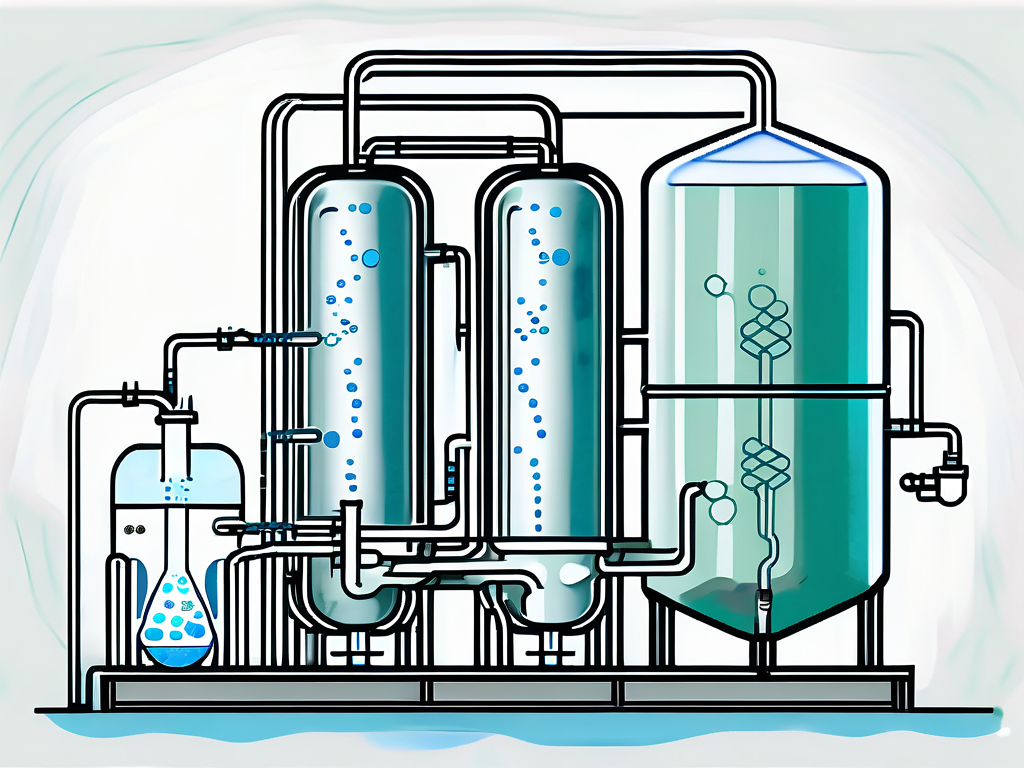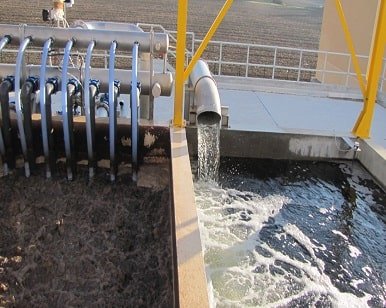The Role of Membrane Bioreactor in Achieving Higher Effluent Quality Standards
The Role of Membrane Bioreactor in Achieving Higher Effluent Quality Standards
Blog Article
How Membrane Layer Bioreactors Are Changing Water Purification Equipments
The introduction of membrane layer bioreactors (MBRs) represents a considerable advancement in the area of water purification, merging biological treatment procedures with advanced membrane filtering modern technologies. This integration not only improves the top quality of treated effluent however additionally addresses city space restraints, making MBRs especially suitable for largely booming areas. As international water scarcity increases, the duty of MBRs in facilitating potable water reuse and lasting water monitoring becomes progressively essential. Yet, the ramifications of this innovation prolong beyond efficiency-- what chances and obstacles lie ahead for its prevalent execution?
Review of Membrane Bioreactors
Membrane layer bioreactors (MBRs) represent a substantial advancement in water purification innovation, as they integrate organic therapy procedures with membrane purification. This integration enhances the performance of wastewater treatment by making use of bacteria to weaken natural pollutants while all at once utilizing semi-permeable membranes to separate treated water from put on hold solids and pathogens.
The MBR system typically includes a biological activator where the microbial populace metabolizes contaminants, followed by a membrane layer purification unit that keeps biomass and permits only clean water to go through. This double functionality results in higher effluent quality contrasted to standard therapy techniques. MBRs can be run in both set and continuous circulation modes, using adaptability in style and application.
They likewise enable the recuperation of water for reuse, hence contributing to water sustainability initiatives. Generally, MBRs are at the leading edge of improving water therapy performance and high quality, showcasing the possibility for ingenious remedies in environmental administration.
Benefits of MBR Innovation
The combination of organic therapy with membrane filtration provides many advantages for water purification procedures. One of the key benefits of Membrane Bioreactor (MBR) modern technology is its capacity to properly get rid of both inorganic and organic impurities, leading to premium effluent. The membranes function as a physical obstacle, avoiding suspended solids and microorganisms from travelling through, which improves the total safety and dependability of treated water.
Furthermore, MBR systems call for a smaller impact compared to traditional treatment techniques, permitting more reliable space use. This portable design is especially beneficial in urban setups where land is restricted. MBRs likewise demonstrate functional versatility, accommodating differing influent top qualities and circulation rates without substantial performance destruction.
Additionally, the process uses improved nutrient elimination capacities, specifically for nitrogen and phosphorus, which are critical for avoiding eutrophication in obtaining waters. The lowered sludge production linked with MBR innovation likewise translates to lower disposal expenses, making it an affordable option over time - Membrane Bioreactor. On the whole, the advantages of MBR innovation position it as a leading option for sustainable and innovative water filtration systems, resolving both ecological and financial worries
Applications in Water Filtration
Applications of Membrane Bioreactor (MBR) technology in water filtration are impactful and diverse, addressing numerous treatment needs across several sectors. MBRs efficiently incorporate biological treatment processes with membrane filtration, making them suitable for community wastewater therapy, commercial effluent administration, and even drinkable water reuse initiatives.
In metropolitan settings, MBRs are progressively utilized to boost the quality of treated wastewater, permitting for compliance with stringent discharge regulations and facilitating the recycling of water for watering and non-potable uses. Their compact design likewise makes them ideal for metropolitan atmospheres where area is limited.
Industrially, MBR technology is made use of to deal with process water and wastewater, specifically in industries such as food and beverage, drugs, and fabrics. By effectively removing contaminants and put on hold solids, MBRs aid industries minimize ecological influences while recouping useful sources from wastewater streams.
In Addition, MBRs are obtaining traction in decentralized water treatment applications, where small systems can be released in remote areas or establishing regions. This adaptability enables areas to accomplish sustainable water management remedies, enhancing accessibility to clean water while decreasing reliance on typical therapy methods.
Case Researches and Success Stories

In an additional example, a fabric manufacturing center in Bangladesh embraced MBR technology to address its wastewater challenges. The system lowered chemical oxygen demand (COD) degrees from 1,200 mg/L to less than 100 mg/L, therefore meeting regulative requirements and significantly lessening environmental effect.
The College of Cape Town's MBR installment has verified effective in treating greywater for non-potable reuse on university. This project not just conserves drinkable water yet also acts as an academic version for sustainable techniques.
Furthermore, a fish and shellfish handling plant in Norway used MBR modern technology to treat effluents consisting of high degrees of raw material, accomplishing over 90% toxin removal. These study emphasize MBR technology's convenience and its vital role in enhancing water high quality throughout varied applications.
Future of Water Therapy Solutions
As global water scarcity and pollution obstacles escalate, innovative water treatment services are ending up being significantly vital to guarantee sustainable access to clean water. The future of water treatment hinges on the combination of sophisticated technologies that boost the performance and performance of filtration procedures. Membrane layer bioreactors (MBRs) go to the center of this development, integrating biological treatment with membrane filtration to produce top quality effluent suitable for various applications.

Emerging fads such as source healing from wastewater, including nutrients and energy, will certainly further transform therapy facilities into eco-friendly centers. Innovations in nanotechnology and membrane materials assure boosted efficiency and longevity of purification systems.

Conclusion
In verdict, membrane layer bioreactors stand for a significant innovation in water purification technologies, successfully combining organic treatment with sophisticated membrane filtration. The many advantages, including boosted effluent high quality and lowered spatial demands, make MBRs specifically appropriate for urban applications. Their duty in potable water reuse and lasting water monitoring highlights their significance in resolving global water deficiency challenges. Continued r & d will certainly even more boost the efficacy and adoption of MBR innovation, making certain a resilient future for water therapy remedies.
The emergence of membrane layer bioreactors (MBRs) stands for a substantial advancement in the field of water purification, merging biological treatment processes with cutting-edge membrane filtering innovations. As worldwide water shortage escalates, the duty of MBRs in promoting safe and clean water reuse and lasting water monitoring comes to be increasingly crucial. They also enable the recovery of water for reuse, hence adding to water sustainability campaigns.As worldwide water shortage and contamination challenges increase, ingenious water treatment services are becoming significantly crucial to make certain lasting access to clean water. Their role in potable water reuse and lasting water administration click this highlights their significance in addressing international water deficiency difficulties.
Report this page